Last-Minute NYC Holiday Gift Guide 🎁
We’ve created a holiday gift guide with presents for the intrepid New Yorker that should arrive just in time—


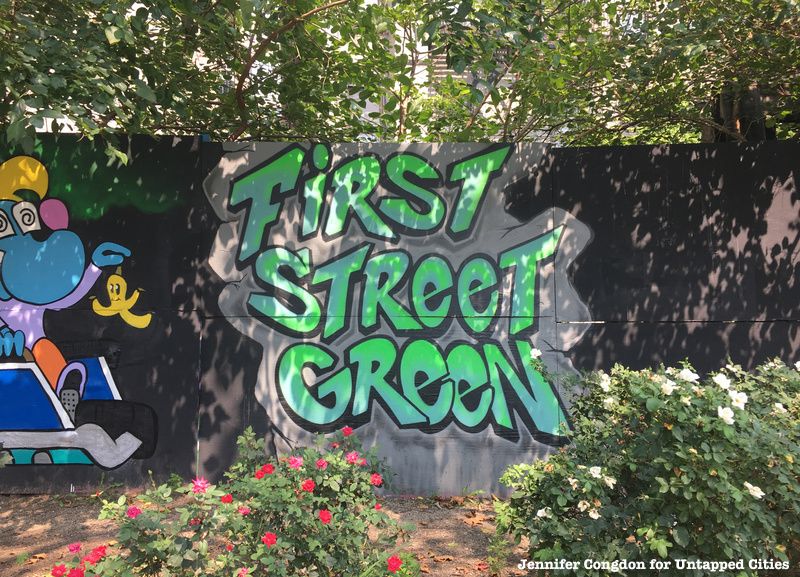
As evident by the popularity of outdoor spaces like Central Park and the ultra-trendy High Line, New York City has a wide variety of green spaces. However, on summer weekends and in the midst of tourist season, these overpopulated spaces may not offer the ideal respite from the city that many people are craving. Luckily, New York is home to numerous community gardens, especially in the East Village, that are open to the public. Many of these gardens serve as artifacts of New York history and offer secluded space for community gatherings, art events, and relaxation.
Community gardens are particularly significant in New York’s tumultuous history. Paradoxically, they are a source of both conflict and community building. The number of community gardens in New York City is continually in flux, but historically, several hundred existed in the city. The East Village and the Lower East Side contain the largest concentration of community gardens in the United States, containing 39 out of the few hundred in the city. Many of these gardens were founded in the 1970s and 1980s when communities took control of abandoned lots and transformed them into community spaces. However, as time progressed, developers snatched up some of the garden plots and the Parks Department took ownership of many of the remaining gardens, helping to preserve the ones that are left.
Read on for our picks of the most notable community gardens in the East Village and pick a few to check out yourself!
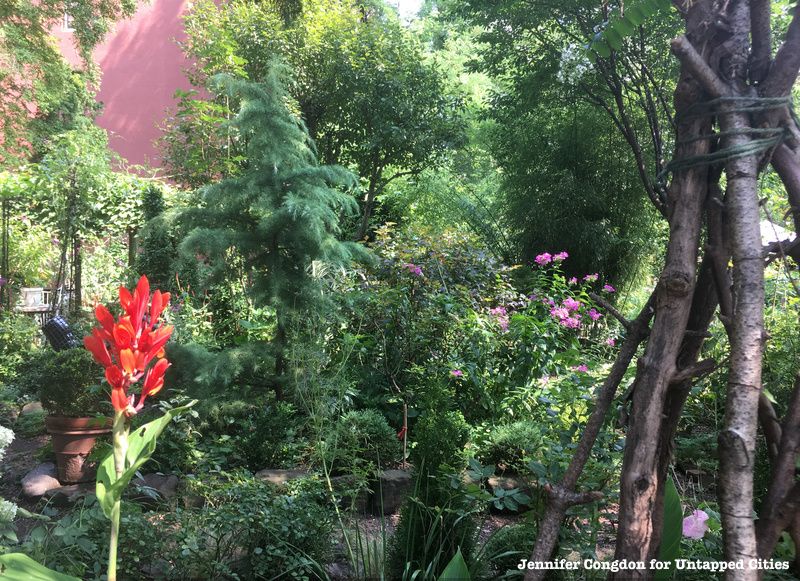
Located at East 9th Street and Avenue C, the 9th Street Community Garden is one of the largest community gardens in New York City. The garden was founded in 1979 and has continued to thrive as a botanic garden with flower and vegetable gardens, a fish pond, peach and cherry trees, a grape arbor, a Japanese garden, and a gazebo. The space also contains a rainwater harvesting system, a composting setup, and community spaces, including a stage and a barbecue area.
Perhaps the most unique aspect of this garden is the giant weeping willow tree that towers over the garden, serving as evidence of an underground stream. Sadly, the willow tree is dead, the result of flooded and contaminated water that overtook the garden during Hurricane Sandy.
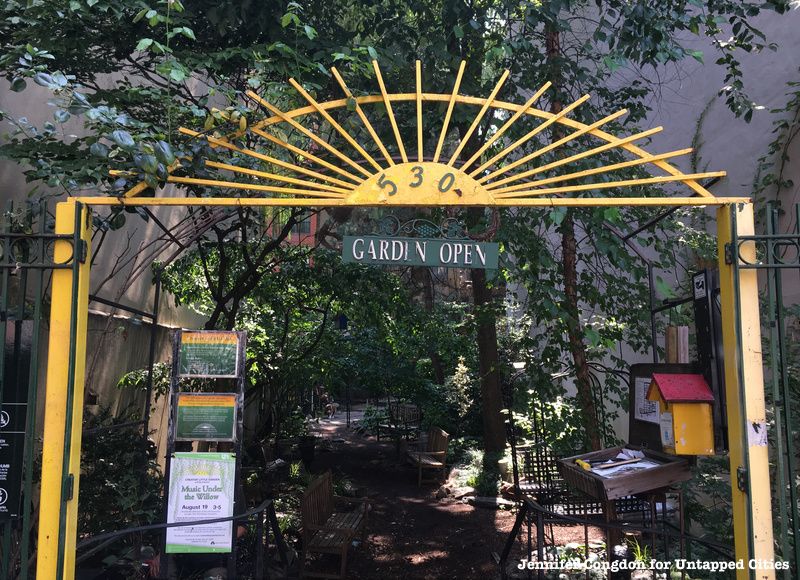
On East 6th Street between Avenues A and B lies Creative Little Garden, a quaint space tucked between buildings. Upon entering the sunny yellow gate, visitors are greeted with an eclectic mix of outdoor decor, including a chair swing, benches, outdoor art pieces, bird feeders, and hanging plants. Keep wandering towards the back of the garden and you may notice the bird sounds, which is no surprise considering that the garden is recognized as a National Wildlife Federation Habitat.

Since opening in 2008, the First Street Garden has served as an art and cultural space open to the community, partnering with artists, architects, community members, and cultural groups. The garden has merged its space with that of First Park, and between the two, street art and murals abound. In 2011, the Lower East Side Girls Club teamed up with 17 artists to paint murals of some of history’s most unforgettable women, including Rosa Parks and Alice Paul, in the First Street Garden. And recently, 86 portraits from all fifty states by photographer John Raymond Miles were seen on the exterior fence.
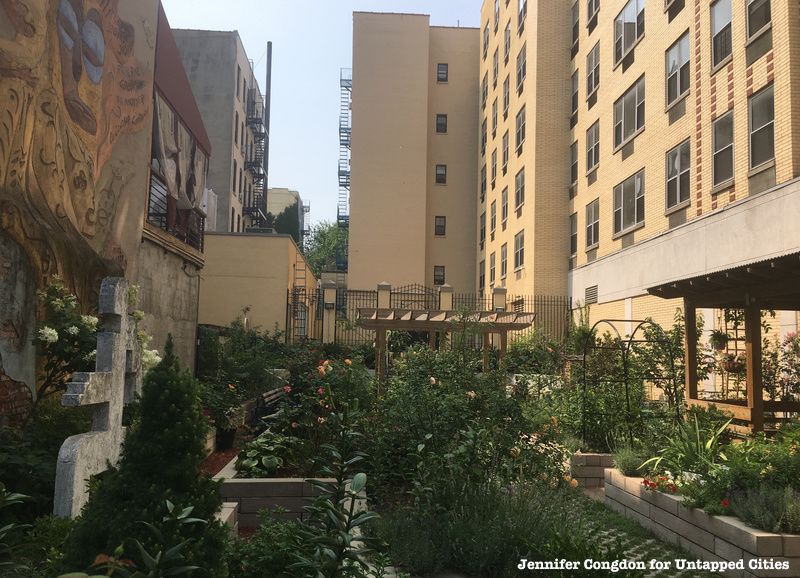
Located on Avenue C between 7th and 8th Streets, this garden was founded by Carmen Pabon, a Puerto Rican artist, community figure, and poet, who established the garden as a “sanctuary for children, local artists, Nuyorican poets, and the elderly”, according to the garden plaque. Significantly, this little community haven has been the source of one of the neighborhood’s biggest battles. In 1999, a private developer bulldozed several lots where this garden was located to build a mixed income housing project. After 17 long years, the Carmen Pabon garden was reopened in 2016 by Donald Capoccia — the same controversial developer who demolished it.
Only time will tell whether the garden will continue its same legacy as back in the day, but in the meantime, the garden provides a special space to reflect on the importance of community and public space.
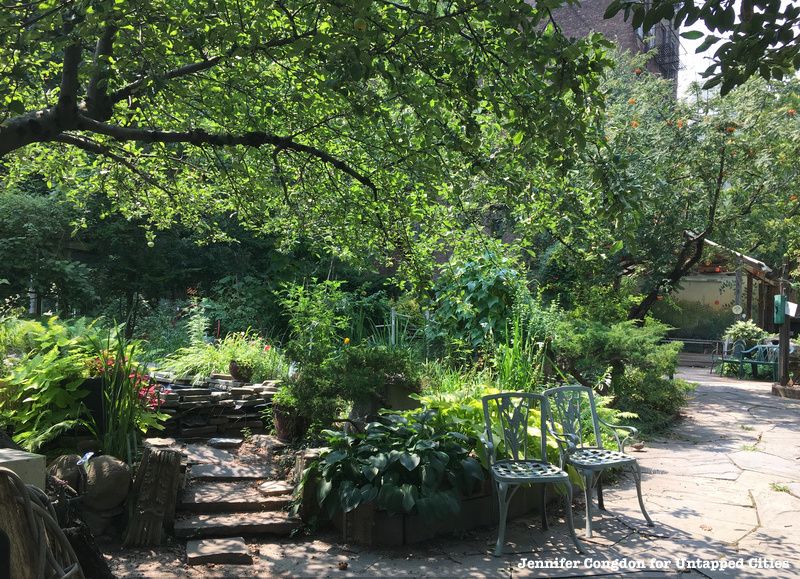
The 6 & B Garden arose out of the community’s desire to cultivate green space in an overdeveloped area that had fallen into decline. In 1982, prompted by the unsightliness of rubble-filled lots, a committee of the 6th Street A-B Block Association petitioned the City’s Operation Green Thumb for a lease to turn a 17,000 square foot site at Sixth Street and Avenue B into a community garden and began work on the space.
In 1985, the City tried to sell the land to the highest bidding developer. However, this plan quickly prompted opposition from the community, causing the membership to skyrocket and alliances with activists and artists to form, and the City’s plan never came to fruition. In 1996, the garden was granted permanent site status. Today, the garden is a community gathering spot that is constantly hosting events like film festivals, children’s workshops, and musical performances (check out the calendar here).
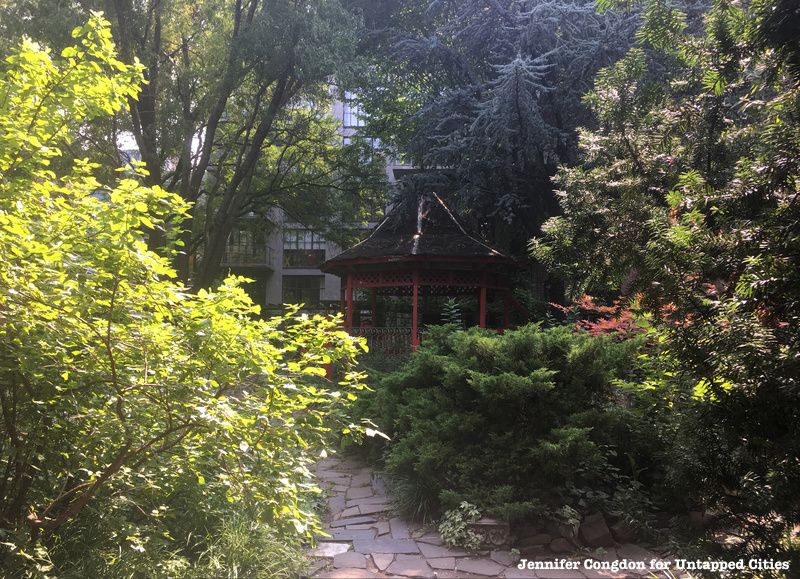
Located on East 8th Street between Avenues C and D is the Green Oasis Garden and the accompanying Gilbert’s Sculpture Garden. Work began on these gardens in 1981, when Normand Valle and Reynaldo Arenas sought to transform a vacant, blighted lot into a community space, and partnered with Gilbert Ingram, who was turning an adjoining lot into a sculpture garden. Their shared goal was to provide a safe haven for the neighborhood children in the wake of crime and abandonment that plagued the East Village.
The sister gardens contain vegetable plots, a koi pond, and a gazebo, amongst other things. In fact, the first generation of Nuyorican poets read their work in this space, amongst performances of music and plays.
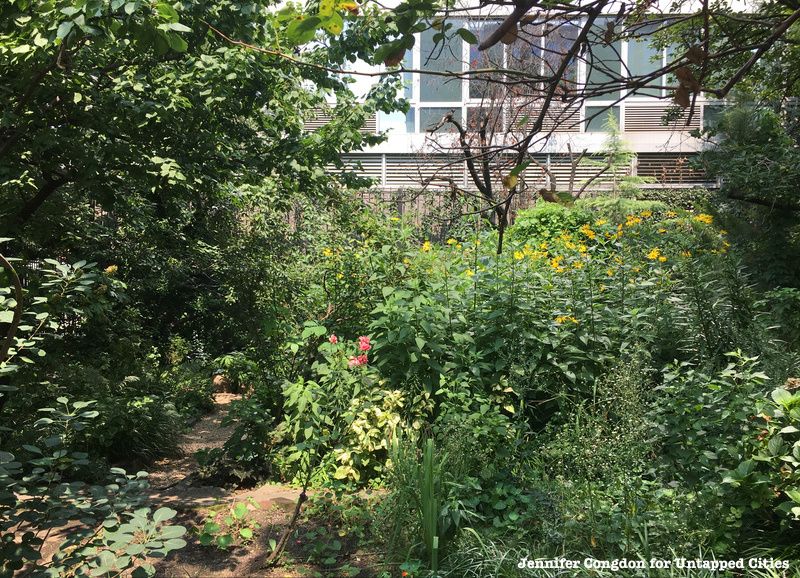
Founded in 1973, the Liz Christy Garden was the first community garden to open in New York City. The garden was founded when Liz Christy and the Green Guerrillas, a group of gardening activists, discovered a vacant lot and became determined to transform it into a community garden. Their efforts were a success, inspiring communities all over the city to establish their own gardens.
The garden features a pond with fish and turtles, a wildflower habitat, fruit trees, vegetable gardens, and wooden benches. The garden is maintained by volunteers, who allow the garden to be open year-round. The garden accepts donations to pay for tools and supplies and encourages people to become members by volunteering in the garden. After 20 hours of volunteering, one receives a key to the garden, and after 40 hours, voting rights, not to mention the satisfaction of improving the garden for the community.
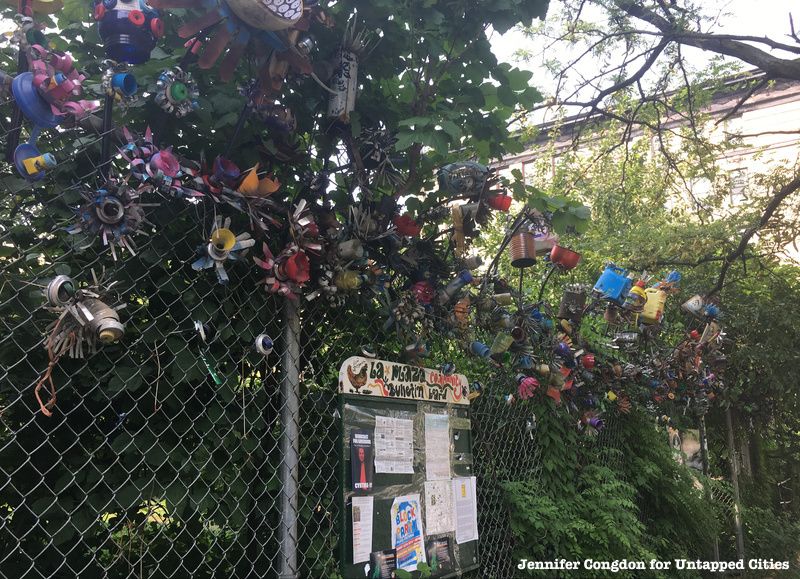
The La Plaza Community Garden was founded in 1976 by local residents, gardening activists like Liz Christy and the Green Guerrillas, and the Latino group CHARAS, all of whom cleared out garbage and planted seeds to improve the deteriorating, vacant lots. The land became a site for cultural events, and eventually, La Plaza’s amphitheater was constructed from reclaimed building materials.
During the 1980s, developers attempted to gain ownership of La Plaza in order to build on the land, prompting numerous court battles that culminated in a 2002 legal settlement that granted preservation status to La Plaza.
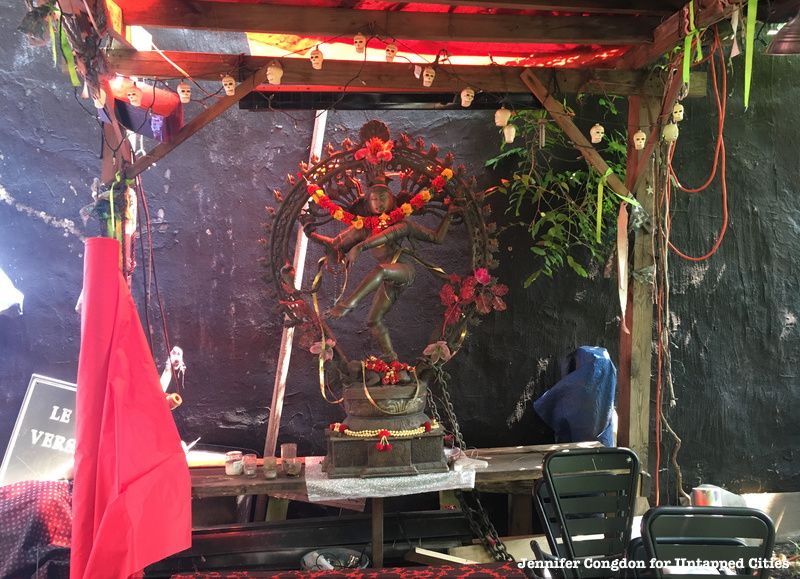
Le Petit Versailles was founded in 1996 on a lot that housed a former “chop shop”, with entrances on both Houston Street and Second Street. It is a project of Allied Productions, a not-for-profit arts organization, so naturally, a stage is the main focus of this garden. A narrow path of bricks meanders from the Houston Street entrance to the stage, where performers, filmmakers, and visual arts showcase their work, amongst beds of flowers and an arbor covered seating area.
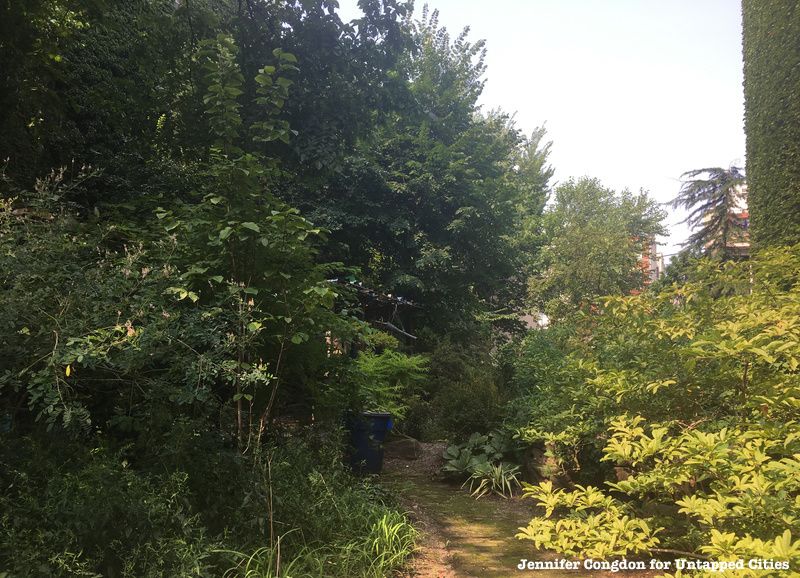
This community garden is notable for its environmental impact, for it is run by the Lower East Side Ecology Center, which has been a leading organization for promoting urban sustainability in New York. The organization specializes in composting, e-waste recycling, and environmental education. They offer composting services in the Union Square Greenmarket, their main site located by the East River, and in this community garden. New Yorkers can drop off food scraps at these locations, where they will be brought to the main facility to be processed and then put to good use.
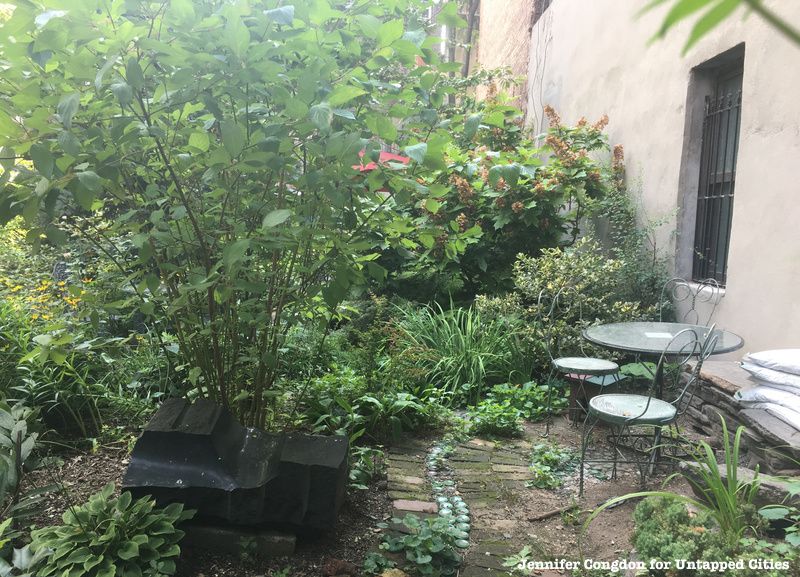
The plot of land that comprises Dias Y Flores has a rich history: originally, it contained a building that, after being abandoned in the 1970s, became a site of drug trade, prompting the city to board it up and eventually bulldoze it, leaving a rubble-filled lot in its place. In 1978, the 13th Street Block Association stepped in and began the painstaking work of cleaning up the land to eventually construct a garden and playground.
The association partnered with community members and neighborhood clinics to provide services and community events. True to its legacy, the garden’s membership currently consists of over 40 families and is affiliated with local schools and clinics. The garden offers classes in horticulture, Tai Chi, art, and more. It also contains a fish pond, a rainwater collection system, and an impressive solar-powered fountain.
Next, check out the 8 Must See Spots in the East Village and the Top 10 Hidden Gardens in NYC
Subscribe to our newsletter